Seventy-five years ago folk singer Woody Guthrie penned the initial lyrics to “This Land Is Your Land,” considered by many to be the alternative national anthem. Sung in elementary schools, children’s summer camps, around campfires, at rallies, and during concert encores, “This Land Is Your Land” is the archetypal sing-along song, familiar to generations of Americans. But what most do not know is that Guthrie, the “Oklahoma Cowboy,” actually wrote the song in New York and that its production and dissemination were shaped by the city’s cultural institutions.
The post This land is your land appeared first on OUPblog.

अधिनायक जय है
बचपन से पढते और सुनते आ रहे हैं कि कुछ लोग इतिहास बदल देते हैं … By God इस का जीता जागता उदाहरण भी मिल गया … हमारे नेता और कुछ कर पाए या न कर पाए पर देश का इतिहास जरुर बदलने पर आमादा है
अरे !! हमारे नेता के सिवा है किसी मे इतनी जुर्र्त? नेता और कुछ कर पाए या न कर पाए पर देश का इतिहास जरुर बदलने पर आमादा है चाहे अकबर की बात हो, महाराणा प्रताप की बात हो या फिर हमारे राष्ट्रीय गान जन ग़ण मन … अधिनायक की बात हो… आईए बदलते इतिहास के हम भी साक्षी बनें … भूले व्यापम व्यूपम और बदले इतिहास…… जय जय जय जय हे
Adhinayak Word Should Be removed From National Anthem 12567358
जयपुर। राजस्थान के राज्यपाल कल्याण सिंह ने कहा कि राष्ट्रगान से ‘अधिनायक’ शब्द हटाना चाहिए, इसके बदले ‘मंगल’ शब्द का इस्तेमाल होना चाहिए। अधिनायक शब्द आजादी से पहले के अंग्रेजी शासकों का महिमा मंडन करता है।
राजस्थान विश्वविद्यालय के 26वें दीक्षांत समारोह में कल्याण सिंह ने कहा -‘जन-गण-मन अधिनायक जय है.. लेकिन अधिनायक कौन है? ये अंग्रेजी शासक की प्रशंसा है। अब हमे इसकी जगह जन-गण-मन मंगल गाए.. लिखना चाहिए।’ उन्होंने कहा कि राष्ट्रगान में संशोधन करने का मतलब यह नहीं है कि वह इसके रचयिता रविंद्र नाथ टैगोर का सम्मान नहीं करते हैं।
अकबर नहीं महाराणा प्रताप महान
राज्यपाल कल्याण सिंह ने इसके पहले महाराणा प्रताप को मुगल शासक अकबर से ज्यादा महान बताया था और अकबर की बजाय महाराणा प्रताप नाम से पहले ‘महान’ शब्द लगाने की बात कही थी। ऐसे ही वे झांसी की रानी को विक्टोरिया से अधिक महान और मराठा शासक शिवाजी को औरंगजेब से महान बता चुके हैं। Via jagran.com
The post अधिनायक जय है appeared first on Monica Gupta.
On the Fourth of July, Americans will celebrate Independence Day at picnics, concerts, fireworks displays, and gatherings of many kinds, and they almost always sing. “America the Beautiful” will be popular, and so will “Our County, ’Tis of Thee” and of course the national anthem, “Star-Spangled Banner” (despite its notoriously unsingable tune). The words are so familiar that, really, no one pays attention to their meaning. But read them closely and be surprised how the lyrics describe the meaning of America in three very different ways.
The post The meanings behind the anthems of Fourth of July appeared first on OUPblog.
By Mark Curthoys
Behind the victory anthems to be used by the competing teams at the Glasgow 2014 Commonwealth Games, which open on 23 July, lie stories both of nationality and authorship. The coronation of Edward VII in 1902 prompted the music antiquary William Hayman Cummings (1831-1915) to investigate the origin and history of ‘God Save the King’. While the anthem had become ‘a sacred part of our national life’, Cummings could find no reliable trace of single authorship of its words, though concluded that the aptly-named organist and court musician John Bull (1559×63-1628) had the strongest claim to have composed its tune.
What, though, of the anthems of the nations of the United Kingdom, each separately represented at the Commonwealth Games? The national anthem itself was only gradually adopted as such after its first recorded performance in September 1745. Half-a-century later, its standing was sufficiently established to attract subversive parody. ‘God Save Great Thomas Paine’ was penned in 1793 by a Jacobin sympathiser, the Sheffield balladeer Joseph Mather (1737-1804), who was later subject to criminal proceedings which, for a year, prevented him from performing in public. By the late nineteenth century, public performances of ‘God Save the Queen’ itself provoked occasional hostile reactions in Ireland and Wales, as was noted by the encyclopaedist of music Percy Scholes (1877-1958), author of a definitive study (1954) of what he dubbed ‘the world’s first national anthem’. Political nationalism and cultural revivalism, respectively, inspired alternatives.
‘God Save Ireland’ (1867), written by the journalist and MP Timothy Daniel Sullivan (1827-1914), was rapidly adopted as a de facto national anthem. The more militant ‘A Soldier’s Song’ written in 1907 by the Irish revolutionary Peadar Kearney (1883-1942) did not initially catch on – it was said to be difficult to sing – but in the wake of the Easter Rising in 1916, it eclipsed Sullivan’s anthem and was later adopted by the Irish Free State and its successor Republic of Ireland. Remaining within the United Kingdom, Northern Ireland in turn adopted ‘Danny Boy’ (1912), a ballad composed by a west of England barrister and prolific, commercially-successful songwriter Frederic Edward Weatherly (1848-1929) and set to the traditional ‘Londonderry Air’.
‘Land of my fathers’ (‘Hen wlad fy nhadau’), the national anthem of Wales, dates from 1856 when James James [Iago ap Ieuan] (1832-1902), an innkeeper, composed music to accompany words written by his father Evan James [Ieuan ap Iago] (1809-1878), a cloth weaver from Pontypridd. Like other anthems, its adoption was gradual, but its enthusiastic reception by people of Welsh descent around the world signified its status. ‘O land of our birth’, the anthem of the Isle of Man, also represented at the Commonwealth Games, was composed by William Henry Gill (1839-1923) of Manx parentage and education, who spent most of his life as a civil servant resident in the south of England. A Ruskinian folk revivalist, he visited the island at the end of the nineteenth century to collect folk songs, one of which he used for the musical setting of the anthem, first performed in 1907.
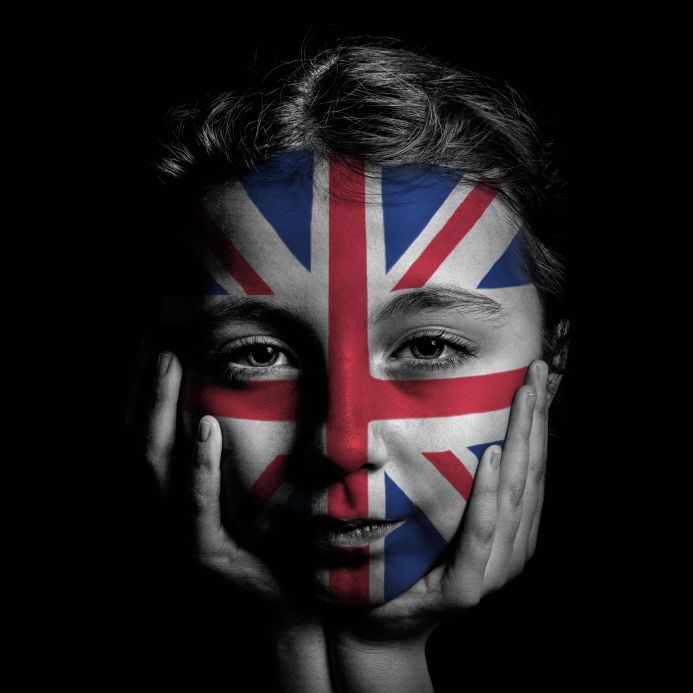
The early twentieth century was a fertile period for patriotic song writing, most obviously ‘Land of Hope and Glory’, written in 1902 by the schoolmaster and don Arthur Christopher Benson (1862-1925) as a Coronation Ode to Edward VII, and sometimes proposed as a national anthem for England. Team England will instead use ‘Jerusalem’, whose musical origins lie in the Great War when, in early 1916, at the request of the ‘Fight for Right’ movement which sought to ’brace’ the nation to pursue the war in the face of mounting losses, Sir Hubert Parry (1848-1918) set William Blake’s words to music.
At the Commonwealth Games between 1962 and 2006 Team Scotland used ‘Scotland the Brave’, whose lyrics were written by the Glasgow journalist Cliff Hanley (1922-1999). Recent research has established that they were a product of Hanley’s writing for the variety stage in Glasgow, and were originally performed as a rousing patriotic finale to the first act of a pantomime during the winter of 1952-3. Both the words and music of ‘Flower of Scotland’, the current anthem of Team Scotland, and a leading contender for an official national anthem, were written in about 1964 by Roy Williamson (1936-1990), a former art student in Edinburgh, and a leading figure in the city’s folk music revival. By 1990 hostility to the playing of ‘God Save the Queen’ at rugby internationals when England played Scotland at Murrayfield, Edinburgh, prompted the Scottish Rugby Football Union to seek a more acceptable sporting anthem. The choice of ‘Flower of Scotland’, with its echoes of Bannockburn, heralded a memorable Scottish rugby victory over England that year.
A musical acknowledgement of the multi-national basis of the United Kingdom awoke early morning listeners to BBC Radio 4 for nearly thirty years at the end of the twentieth century. The day’s broadcasts began with ‘UK Theme’, a medley of tunes representing the constituent parts of the United Kingdom, including Rule Britannia, Scotland the Brave, Men of Harlech, and the Londonderry Air, composed and conducted by Fritz Spiegl (1926-2003), an Austrian refugee from Nazism. It was removed from the schedule in 2006.
Dr Mark Curthoys is the Oxford DNB’s Research Editor for the nineteenth and twentieth century.
Oxford Dictionary of National Biography is a collection of 59,102 life stories of noteworthy Britons, from the Romans to the 21st century. The Oxford DNB is freely available via public libraries across the UK, and many libraries worldwide. Libraries offer ‘remote access’ allowing members to gain access free, from home (or any other computer), 24 hours a day. You can also sample the ODNB with its changing selection of free content: in addition to the podcast; a topical Life of the Day, and historical people in the news via Twitter @odnb.
Subscribe to the OUPblog via
email or
RSS.
Subscribe to only history articles on the OUPblog via
email or
RSS.
Image credit: Union Jack face paint on girl, by Nathanx1, via iStock Photo.The post Songs for the Games appeared first on OUPblog.

I must needs be quick, here. As excited as this post title is, I'm actually less than enthused that it's Saturday. For one thing, I must needs go to work. There are two weddings on Monday the 7th, and since the flower shop is closed Sundays we (meaning me and my other sisters who work there) must go into work and do wedding flowers. If we're uber efficient, perhaps we'll get off at 4 pip emma.
Hope youse all had a glorious fourth. Yay, America! We watched a couple videos, such as Josh Groban singing the National Anthem and Toby Keith's Courtesy of the Red, White and Blue, and I just love Military Men. They get so enthused with patriotic songs!! I was watching those videos going, "I just LOVE being American!
Other than that, we just had a really nice, quiet day. The older I get, the less "into" crowds I am, so I didn't go watch the fireworks last night.
Instead, we had a lovely meal and drank lots of Mike's Hard Lemonade. (Yep, HARD. When life hands you lemons, and all that...) Seriously, that's the way my family celebrates. Food and drinks and food and drinks and food and drinks and food and drinks. It's very relaxing.
Okay, dokay. As I said before, I have to make this quick 'cause *sigh* I must needs be off to work. So, without further eloquence...
God bless!
Cat
Today I'm participating in the second annual Booking Across the USA blog tour, which has been organized so well by our fearless leader Jodie at
Growing Book by Book. Each blogger on the tour is creating an activity for young children that is related to one of the 50 U.S. states and is inspired by a new series of books --
Travels with Charlie -- by Miles Backer with illustrations by Chuck Nitzberg. I signed up for Maryland!
Some of you might remember that my family and I moved from Maryland to California late last summer, so we've been in our new home for almost an entire school year now. Wow! I must say that I am truly enjoying the beauty, sunshine, and way of life out here on the West Coast, but I do miss many things about Maryland, so this blog tour gave me a chance to reminisce.
The four books in the
Travels with Charlie series tackle the West, Midwest, South, and Northeast regions of the United States. Maryland is one of 12 states included in the
Travelin' the Northeast book, which publisher
Blue Apple Books so graciously sent me to help write this post.
Maryland, like each of the states in the book, is devoted a full-page spread that includes the state capital, a picture of the state flag, a bulleted list of interesting facts about the state, and a poem. The poem ends with the line "Where's Charlie?" to get children not only looking for Charlie (the cute dog you see on the cover of the book) but also perusing all the fun, bright, and educational illustrations in which Charlie is hiding on each spread.
Given my blog's theme, I wanted to come up with a book-related activity that involved movement. So why not create a simple dance to the book's poem about Maryland? But first, here are a few definitions that are important to know in order to execute the movements in the dance...
Skipjack: Maryland's official state boat, which looks like a sailboat and is used to fish for oysters in the Chesapeake Bay
Fort McHenry: A star-shaped fort in Baltimore, Maryland, where part of the War of 1812 was fought
And here is the book's poem about Maryland, along with movements to go with each line or group of lines. As you'll see, the first few movements are wavy and circular and the last few are sharp and straight, to give children the opportunity to explore both types…
Maryland: The Old Line State
on Chesapeake Bay?
[Put you hands in a triangle shape just above your head (like a sail) and sway from side to side like you are going over waves.]
Where's Assateague Island,
where wild ponies play?
[Gallop (like a pony) in a circular pattern on the floor.]
wrote the "Star Spangled Banner" --
[March in a star shape (like the shape of Fort McHenry). Put an outline of a star on the floor or use stickers for the points of the star if needed. Rather than making circular patterns as they march, the children should make straight lines, in more of a military fashion.]
"Oh, say can you see?"
[Stop marching and put your hand on your heart as if you are listening to the Star Spangled Banner, also known as our national anthem!]
The star spangled banner was actually a flag that inspired Francis Scott Key to write the national anthem. (The flag was raised at Fort McHenry after a crucial battle in 1814.) What makes this banner so special is that it is the only version of the American flag that has 15 stars and 15 stripes. You can read more about the banner at
this website of the National Museum of American History in Washington, DC, where the original flag is on display.
For an art activity, each child can color his or her own star spangled banner, either freehand our using a coloring page. Here is a sample
coloring page from the TPS-Barat Educational Foundation. TPS-Barat also has a whole
star spangled banner lesson plan for students in kindergarten through second grade, which could probably be adapted for younger students as well. It's aligned with some of the common core language arts standards and includes illustrations, recordings, lyrics, and more related to the national anthem. (When you color the flag, don't forget that the first stripe is a red one.)
You might consider playing the national anthem in the background as the children color their flags, or turning their coloring pages into "real" flags using some glue and popsicle sticks or straws. If time allows, it might also be nice to do a little marching dance to the national anthem when the flags are finished. First have the kids stand still and wave their flags to the beat. Then have them march, holding their flags still over their heads. Finally, see if they can march and wave their flags at the same time while still keeping the beat!
Don't forget to stop by
Growing Book by Book to find the rest of posts in this year's Booking Across the USA tour…plus a giveaway. You can also explore picture books by authors and illustrator from the 50 states through last year's tour
here.
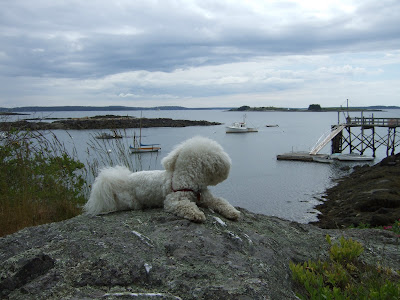 That's our dog, Zeus staring out at the view I got to have for seven incredible days... but that was then and now...
That's our dog, Zeus staring out at the view I got to have for seven incredible days... but that was then and now...
I'm home!
I'll admit - its' nice to be back and if I get to post twice this month I will far exceed my expectations! It's Summer and it's Book Two's turn for my as much of my attention as I can give it. In Maine I was able to sit staring at the ocean and feel the cool morning breezes while turning out pages every day! Every day! I love when that happens, when the book takes more than a few tinny baby steps and begins to show off a little leg!
I am dodging bullets in the way of freelance jobs that threaten to bring my crawling book to a halt. But what can we do? Bills need payin' and I do enjoy to eat a meal now and again.
Hey - how many of you zip over to JacketFlap just to see who was "recently on"? Come on? Fess up. I've now added that click to my frequent Amazon, and Google procrastinating clicks. Try it - it's fun. Easy. And then you can go back to work, I promise! And if you haven't signed up - rush right over now and become part of the publishing network.
Speaking of which - I was just over there on JacketFlap and the blog being highlighted at the moment (how come it's never my blog when I click over?) was David Lubar's "Gadfly in the Ointment". He's so funny and his observations...well, very David Lubar.
Last week he linked to a post that all kid writers MUST read - it's from Kate Messner's blog and it's a real pick-me-up from a 7th grade teacher and writer. Go look!
In related news: I got me a new laptop!!! Yay! The black macbook is my companion for my upcoming LA trip. It's so sleek and fun. Apple you have my heart once again.....
Read the rest of this post





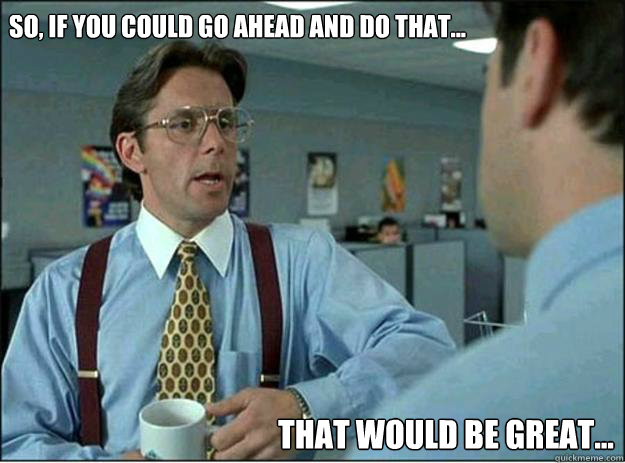




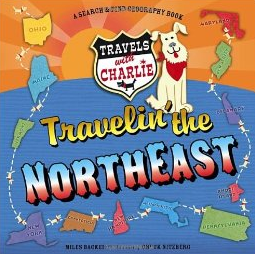

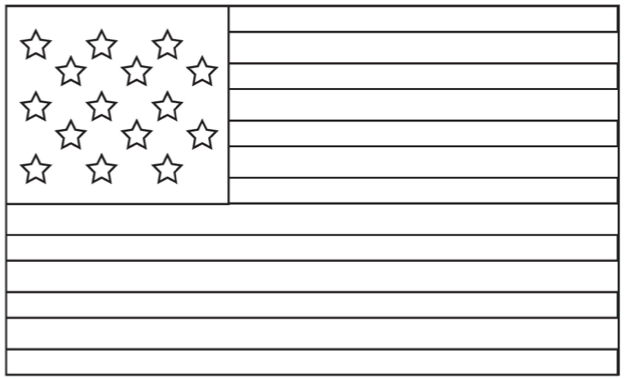

Alan, I'm glad to hear I'm not the only one with a JacketFlap Recently Online addiction. I check that page at least 30 times a day!
Best,
Tracy